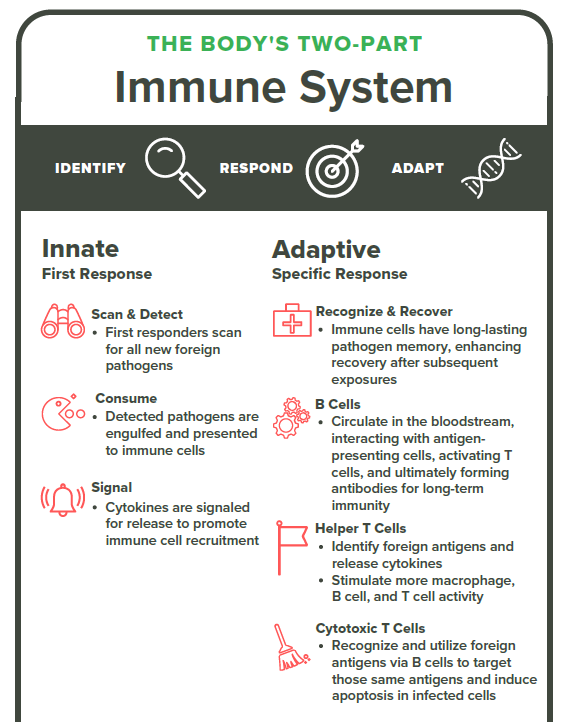The Body’s Two-Part Immune System
About this PDF
The immune system defends the body against foreign invaders through a two-part system that identifies, responds, and adapts to potential threats. First, the innate immune system constantly monitors for any new pathogens. Upon detection, pathogens are engulfed and presented to immune cells which then release cytokines to promote the recruitment of more immune cells.
Next, the adaptive immune system primes the body to remember and respond to specific stimuli. B cells circulate in the bloodstream, working with other components of the immune system to form antibodies that possess long-term immunity while helper T cells identify foreign antigens and release cytokines in response. This stimulates increased activity of macrophages, B cells, and T cells to swiftly destroy the invading pathogen. Finally, cytotoxic T cells clean up infected cells by inducing apoptosis.




